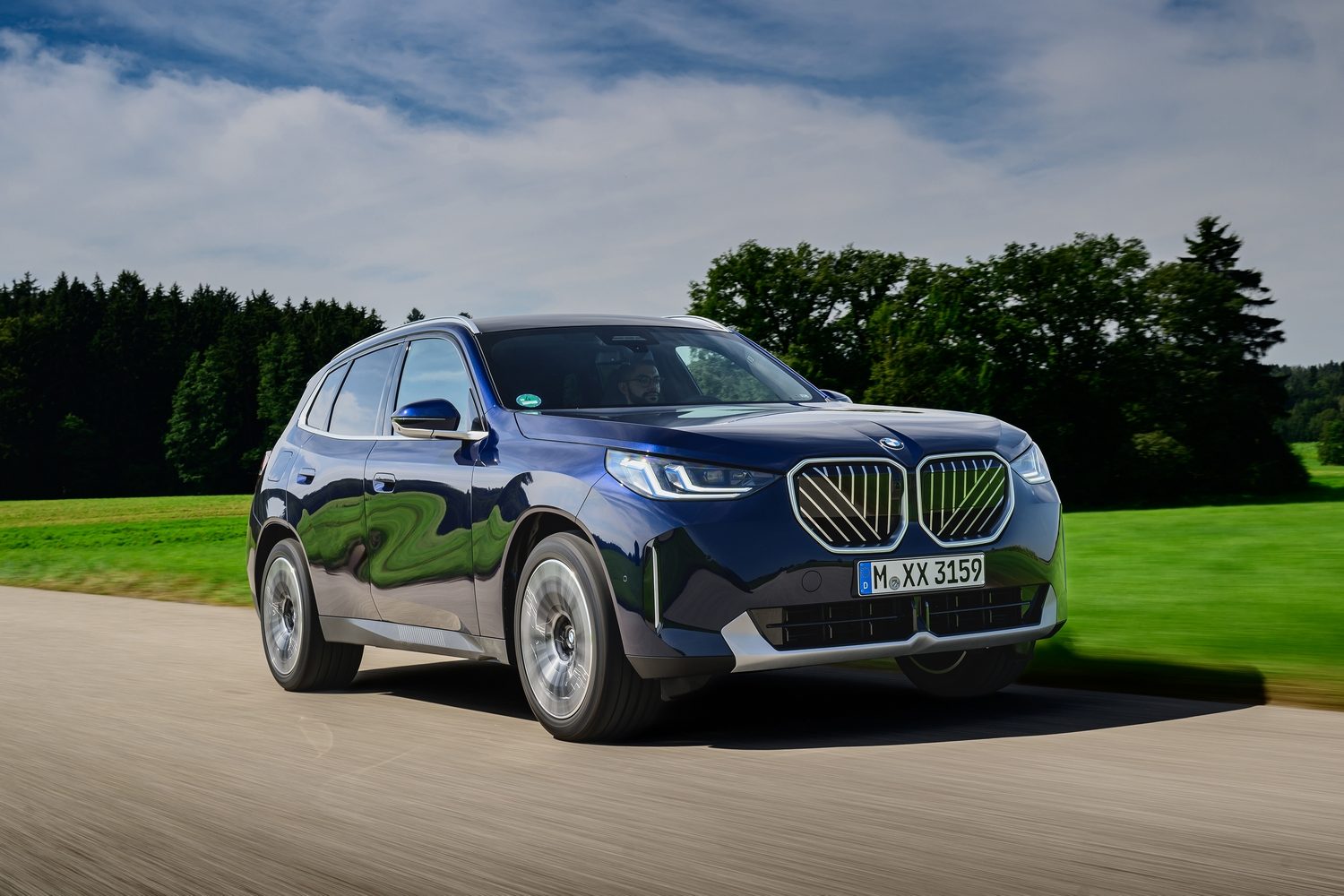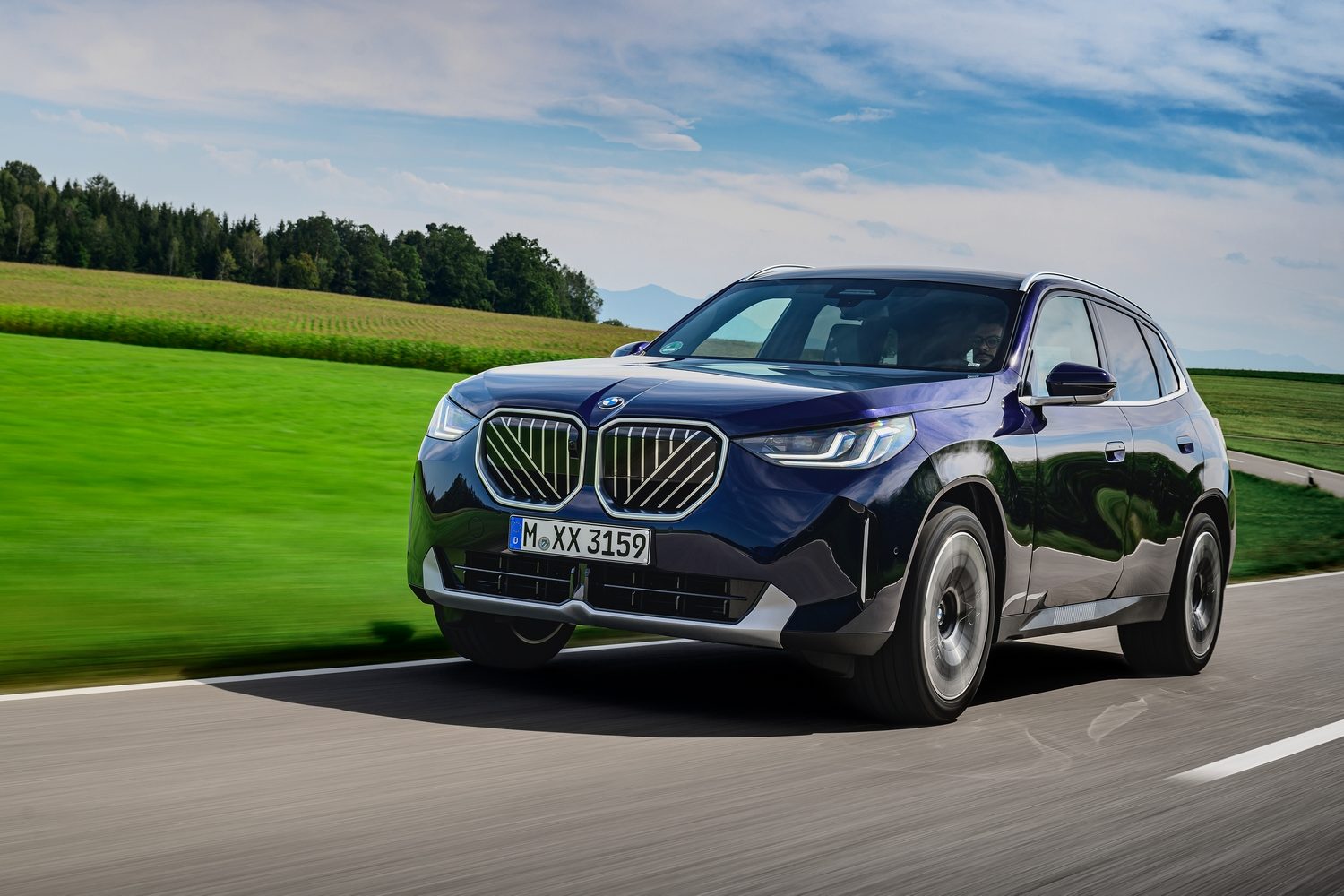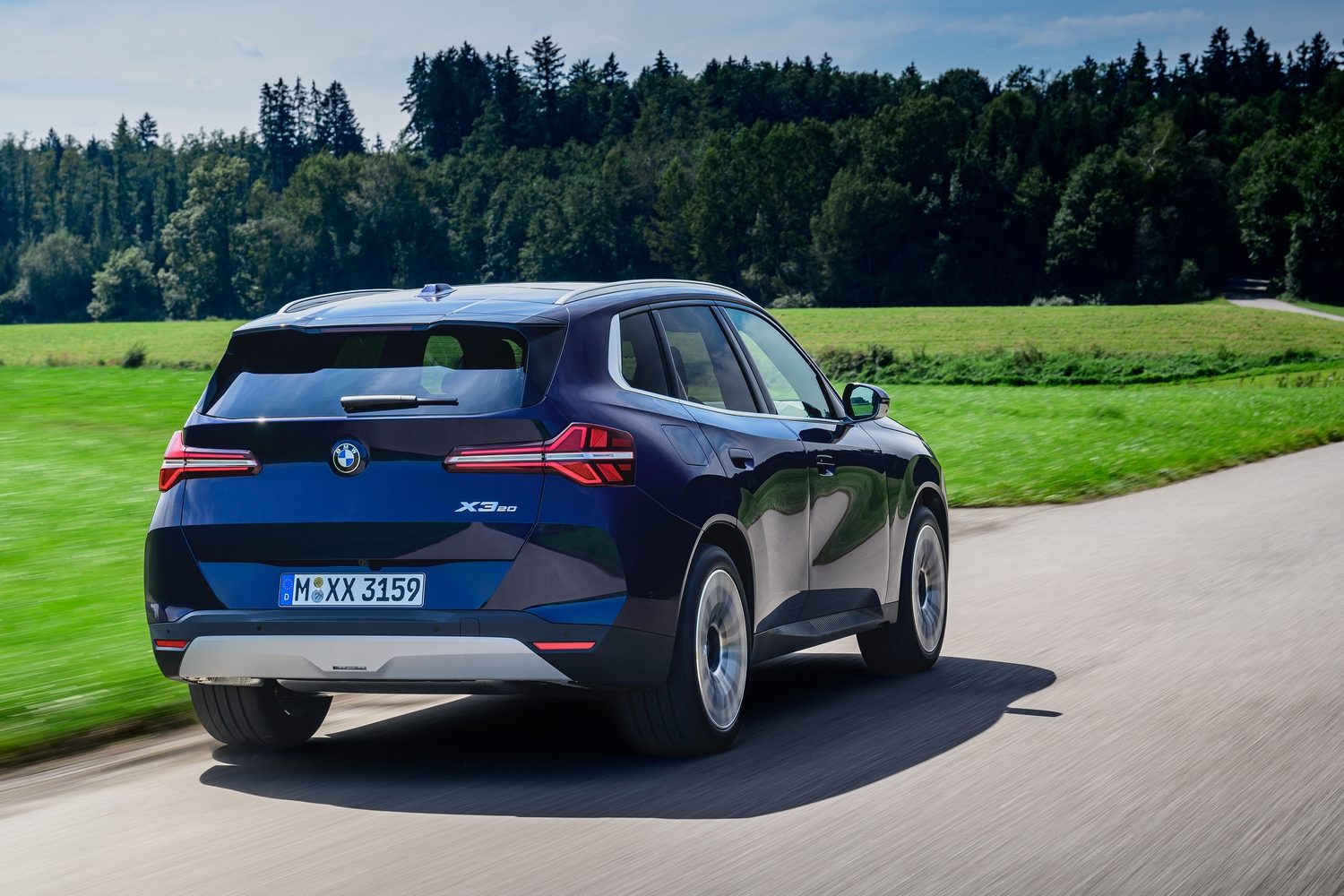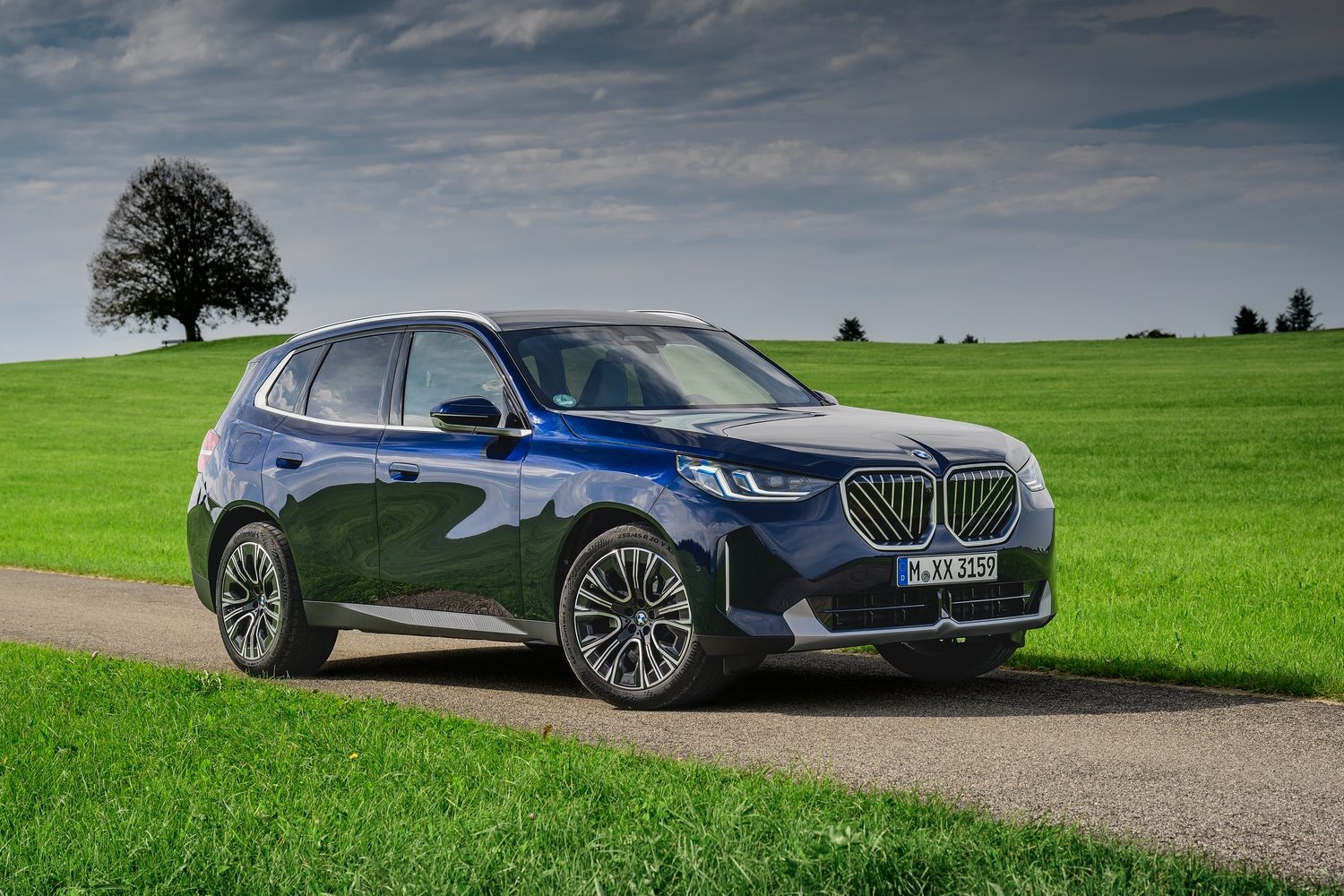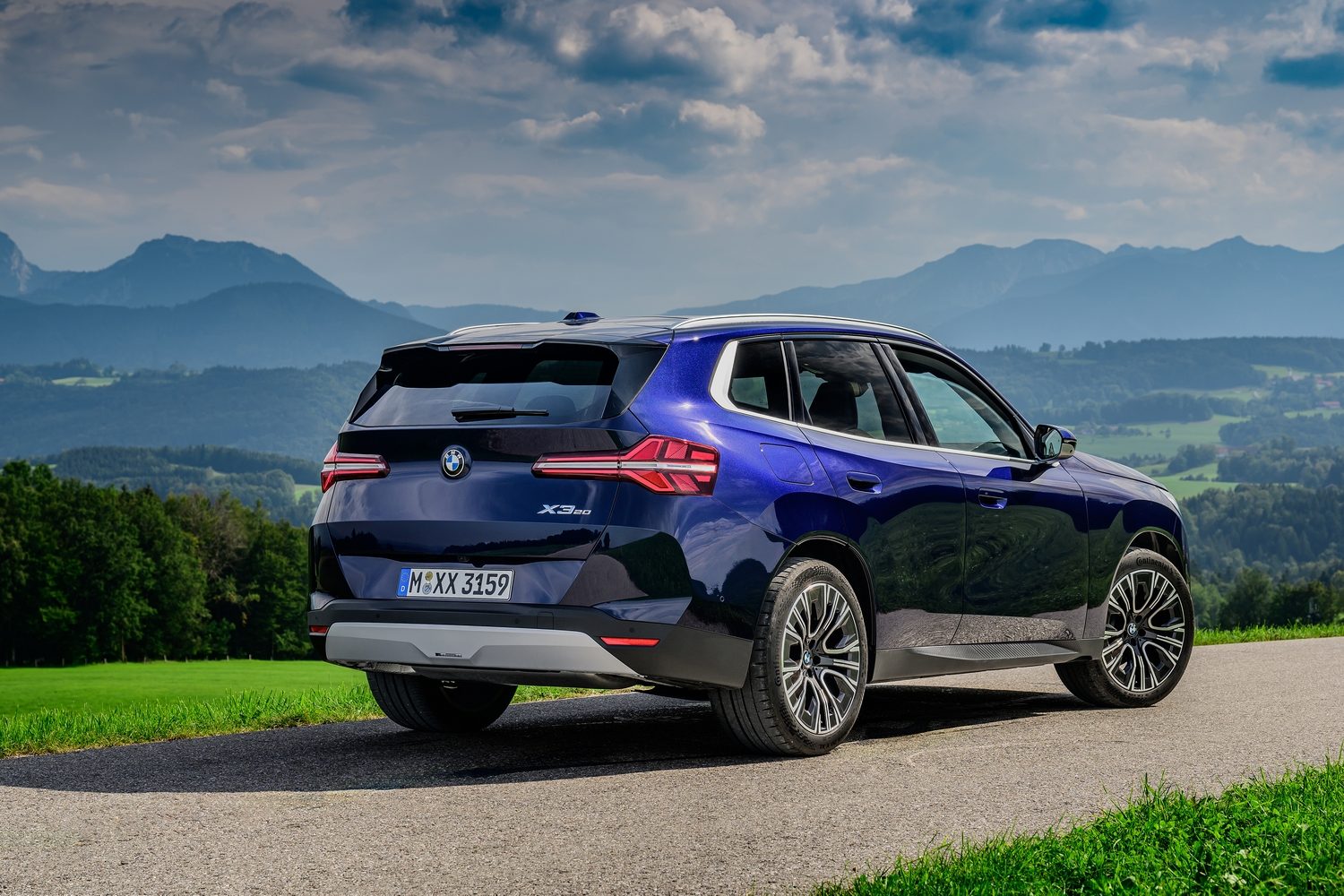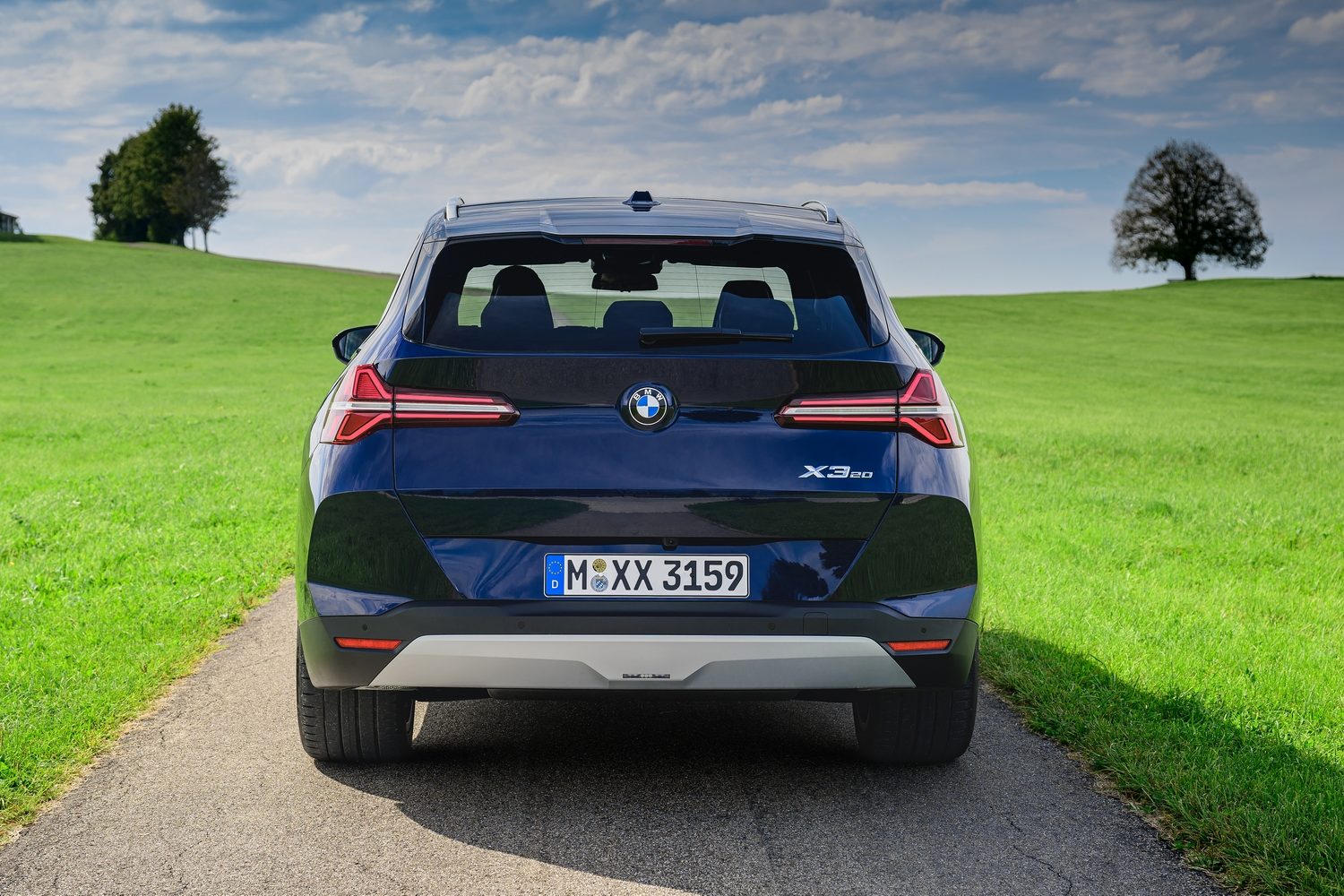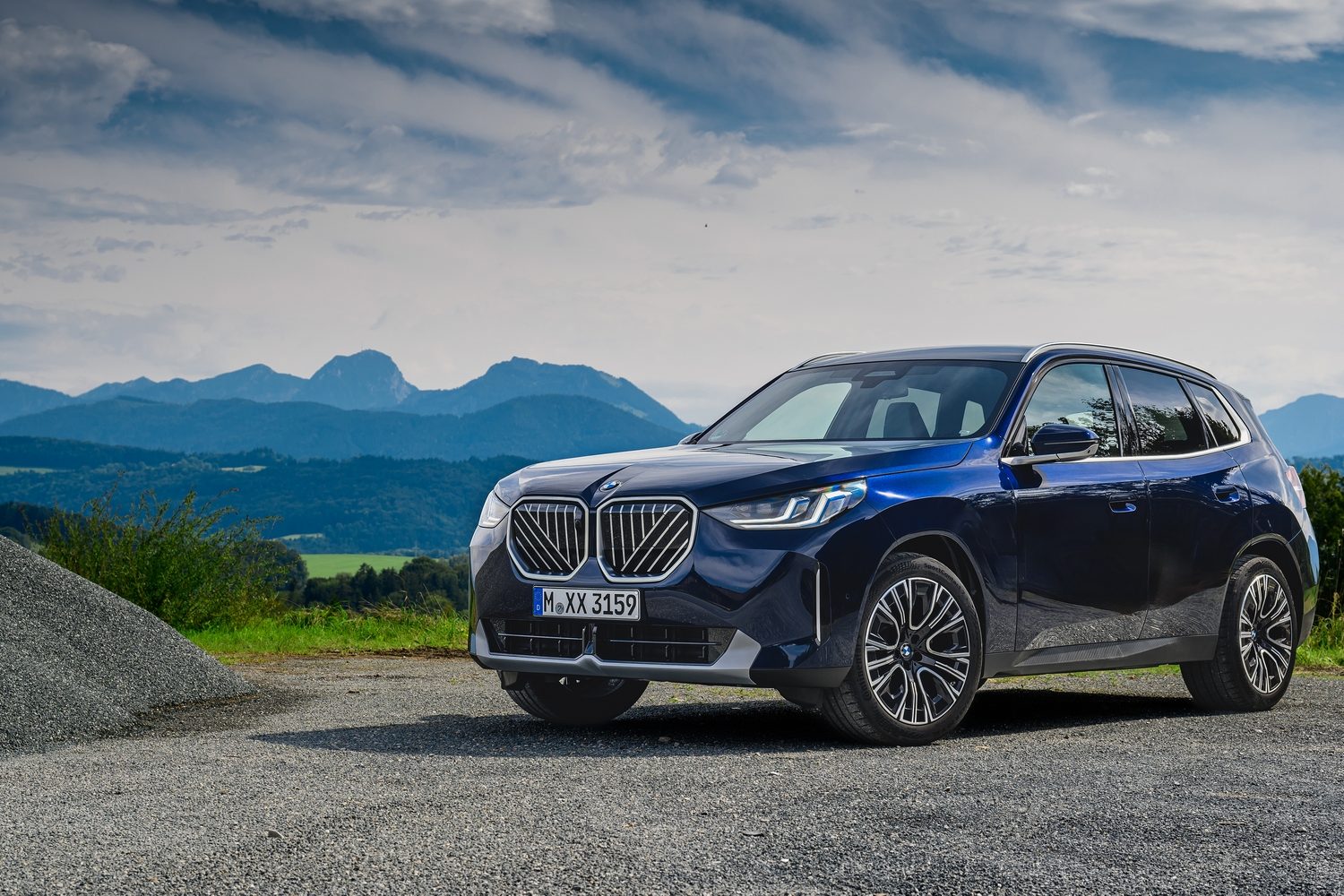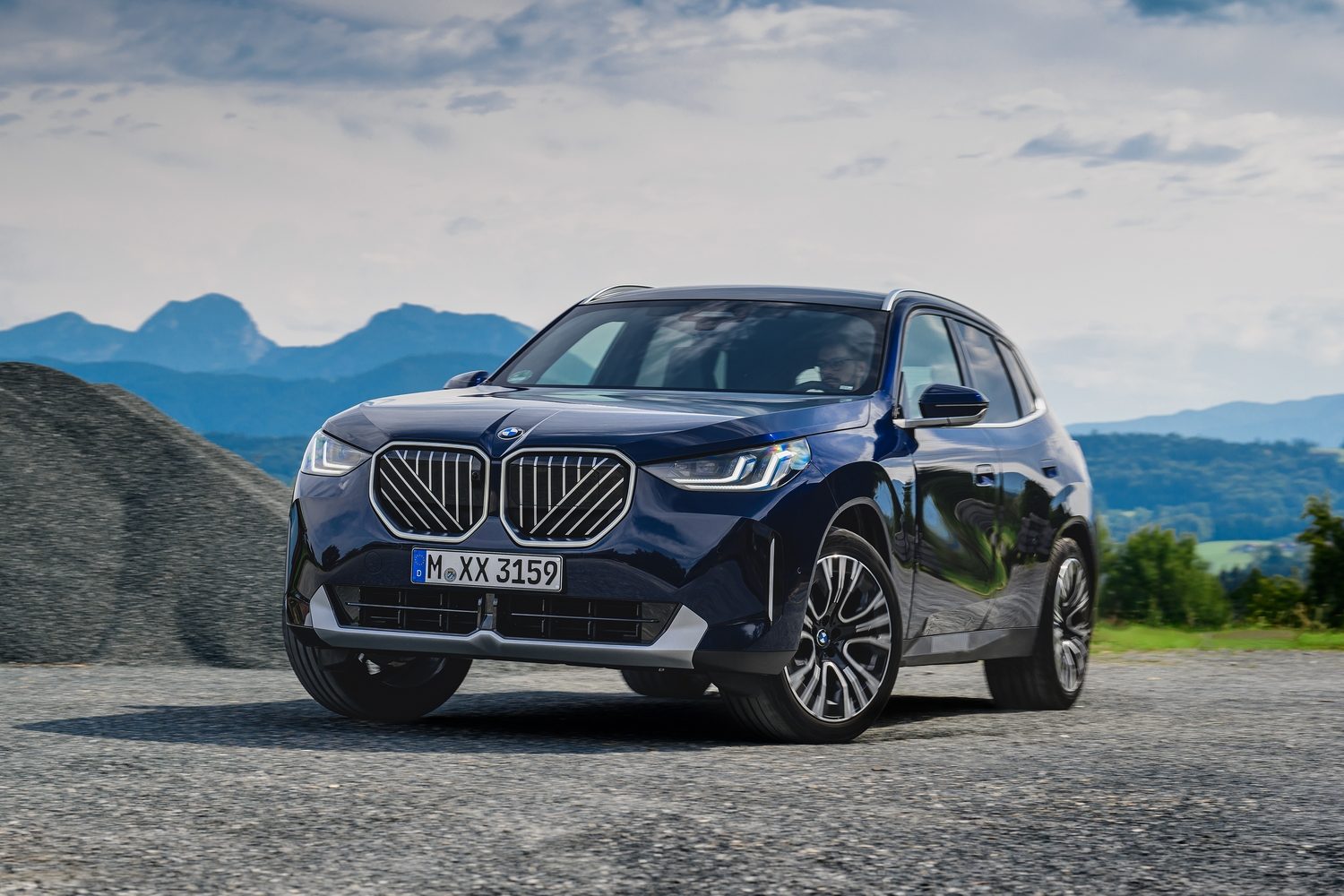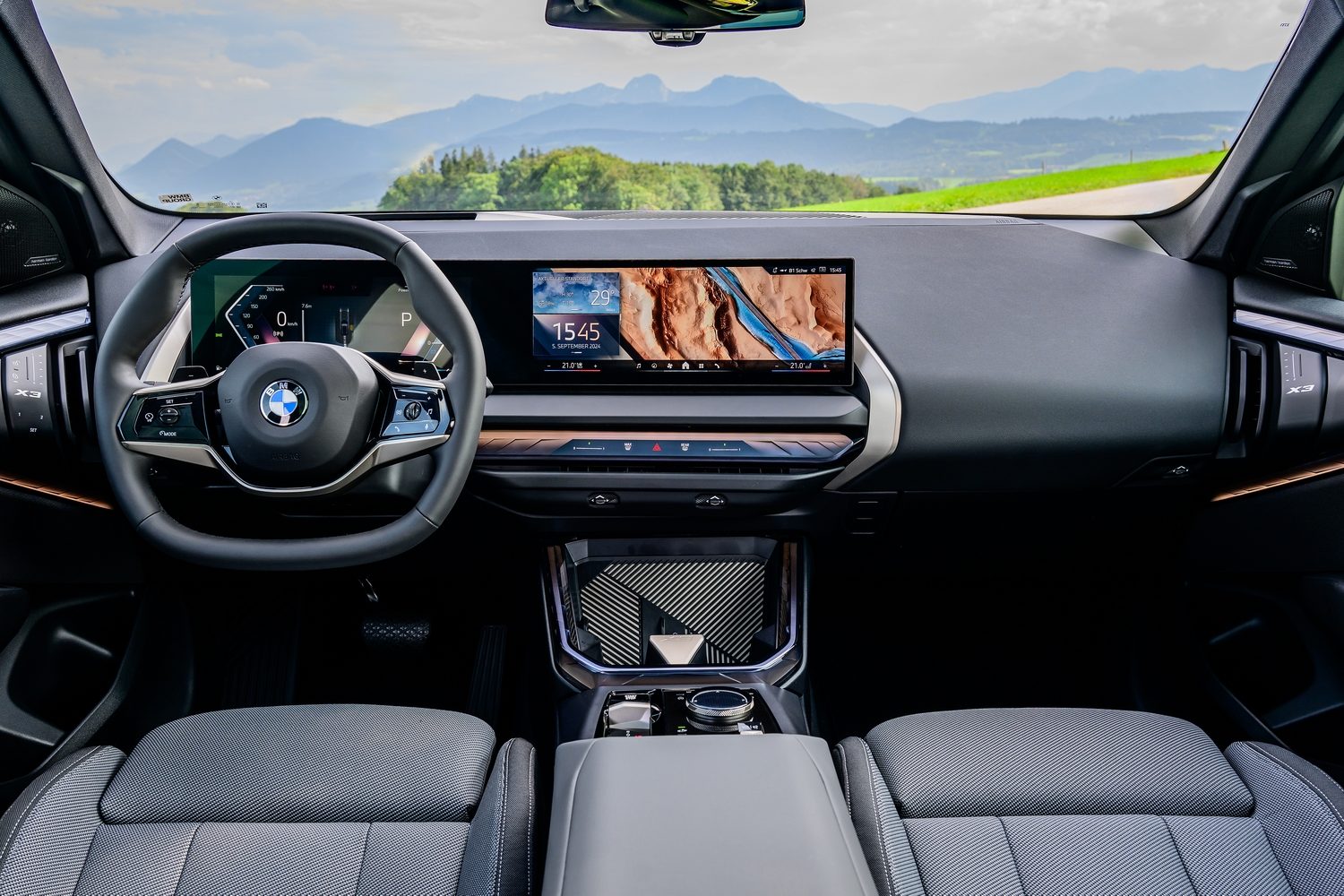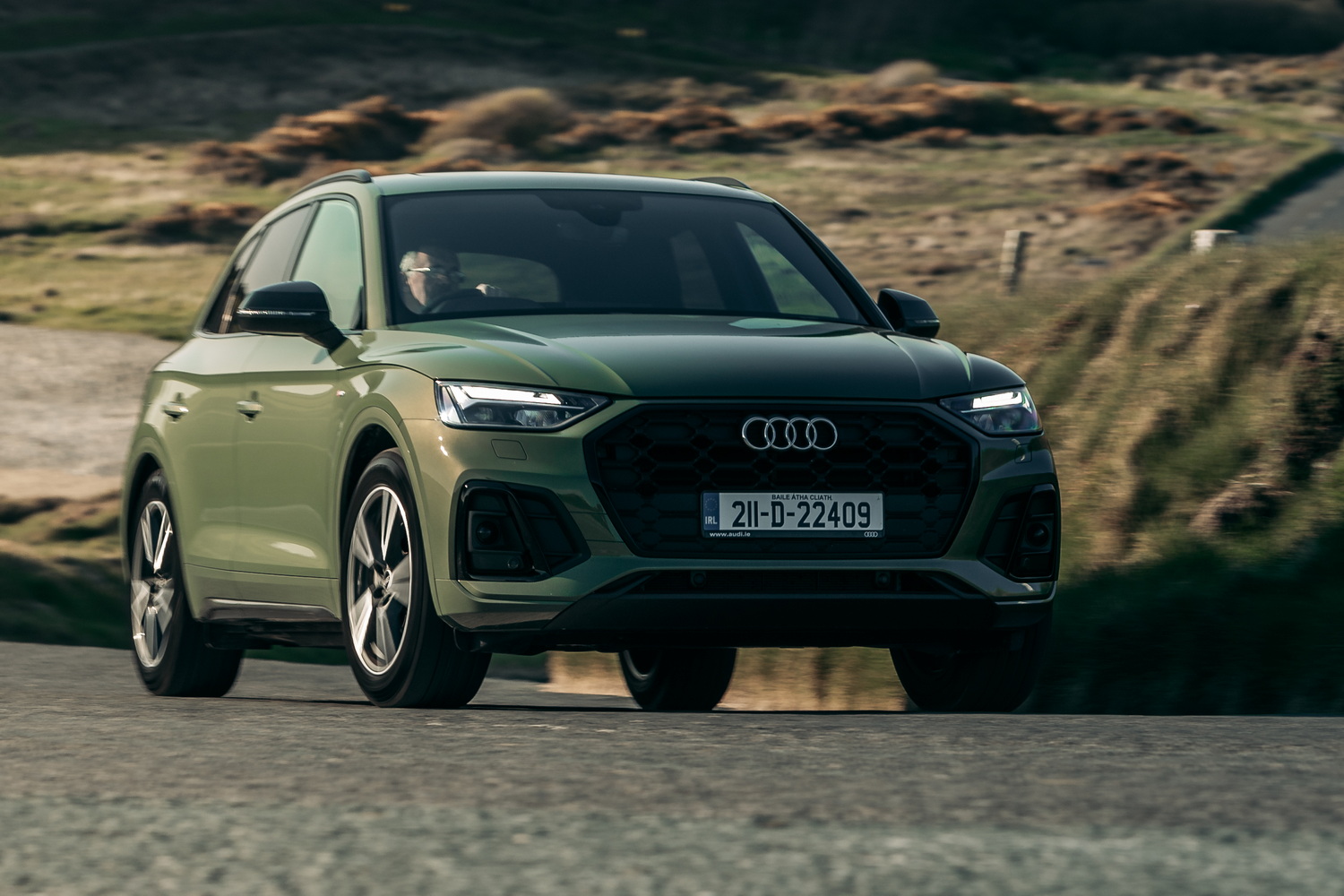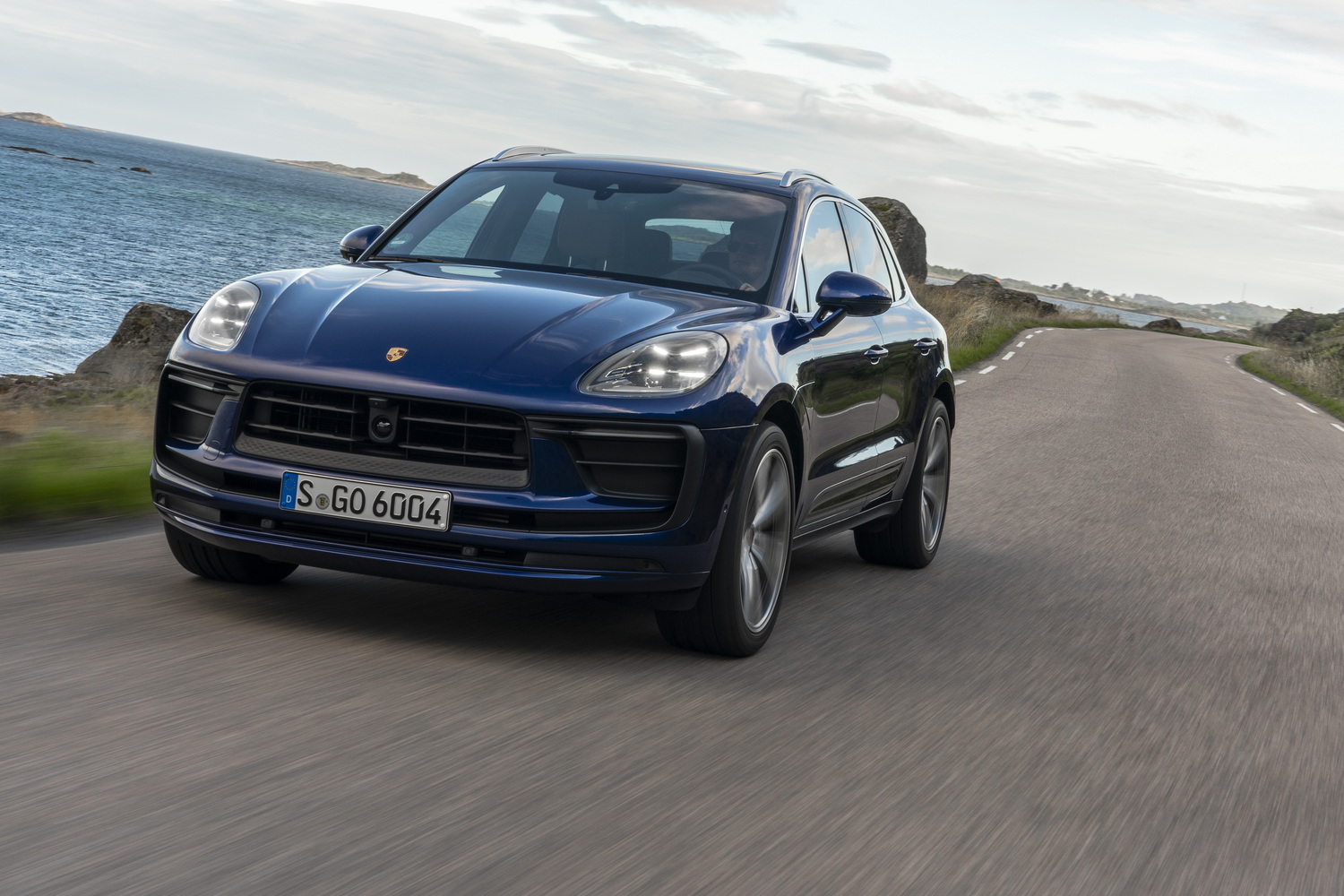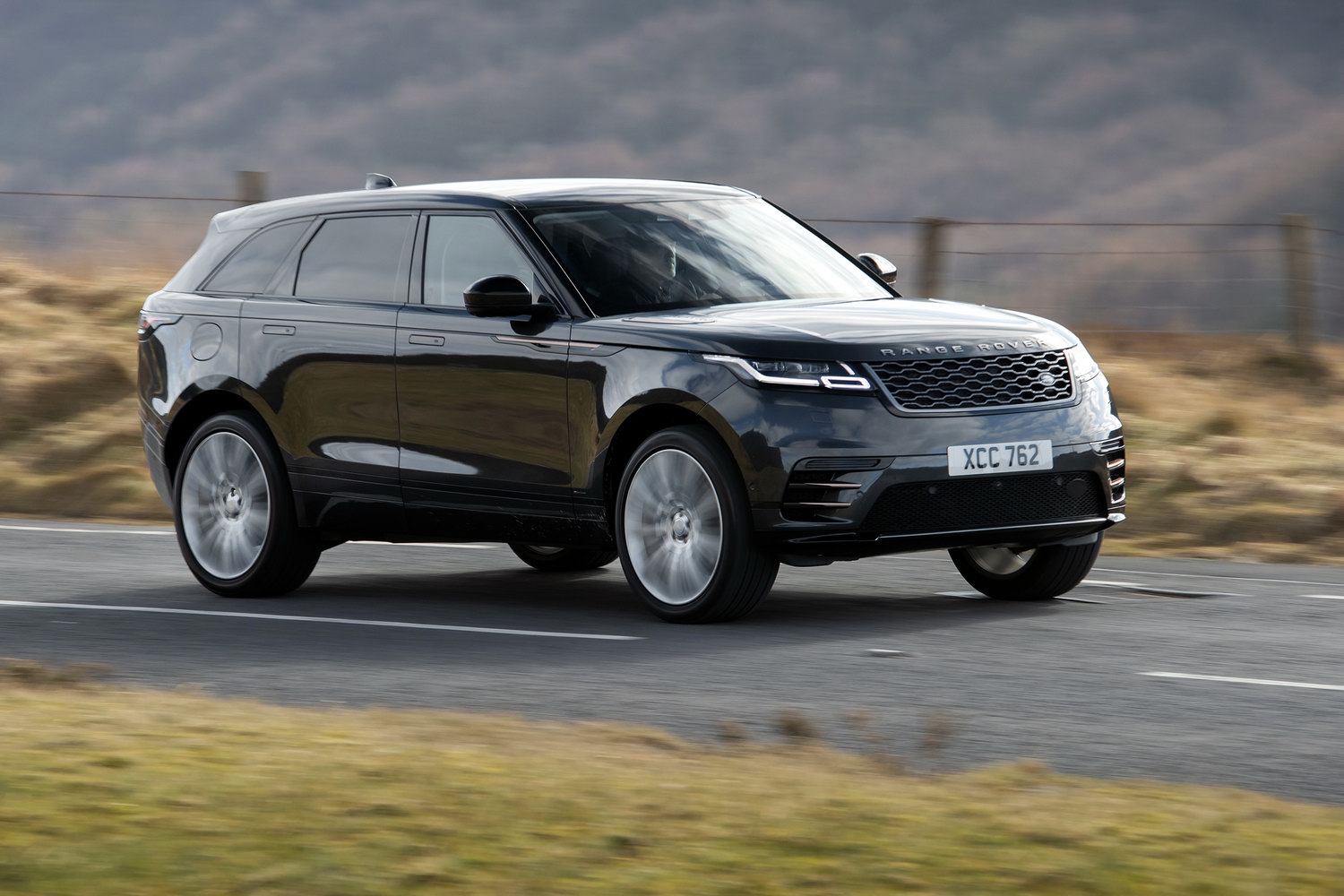The BMW X3 has grown both in size and importance since it was first introduced, and it’s now a key part of the Bavarian brand’s range. Taking the fight to the soon-to-be-updated Audi Q5 and the Mercedes-Benz GLC, it has carved out a niche as one of the driver’s choices in the class, beating its nearest rivals in terms of driver involvement and agility.
And now there’s a new model, which promises to continue where the old car left off. It does come with a fresh, more modern design inside and out, but changes to the mechanical components are largely subtle, so has BMW done enough to remain at the top of its class?
Our time in the relatively ‘entry-level’ X3 20 is the first time we’ve sampled a production-ready version of the new BMW X3 in public, albeit on the smoother asphalt of European roads. It may not be the X3 most buyers will choose, but it shows off BMW’s new mild-hybrid tech and it’s a good bellwether for the rest of the range’s competence.
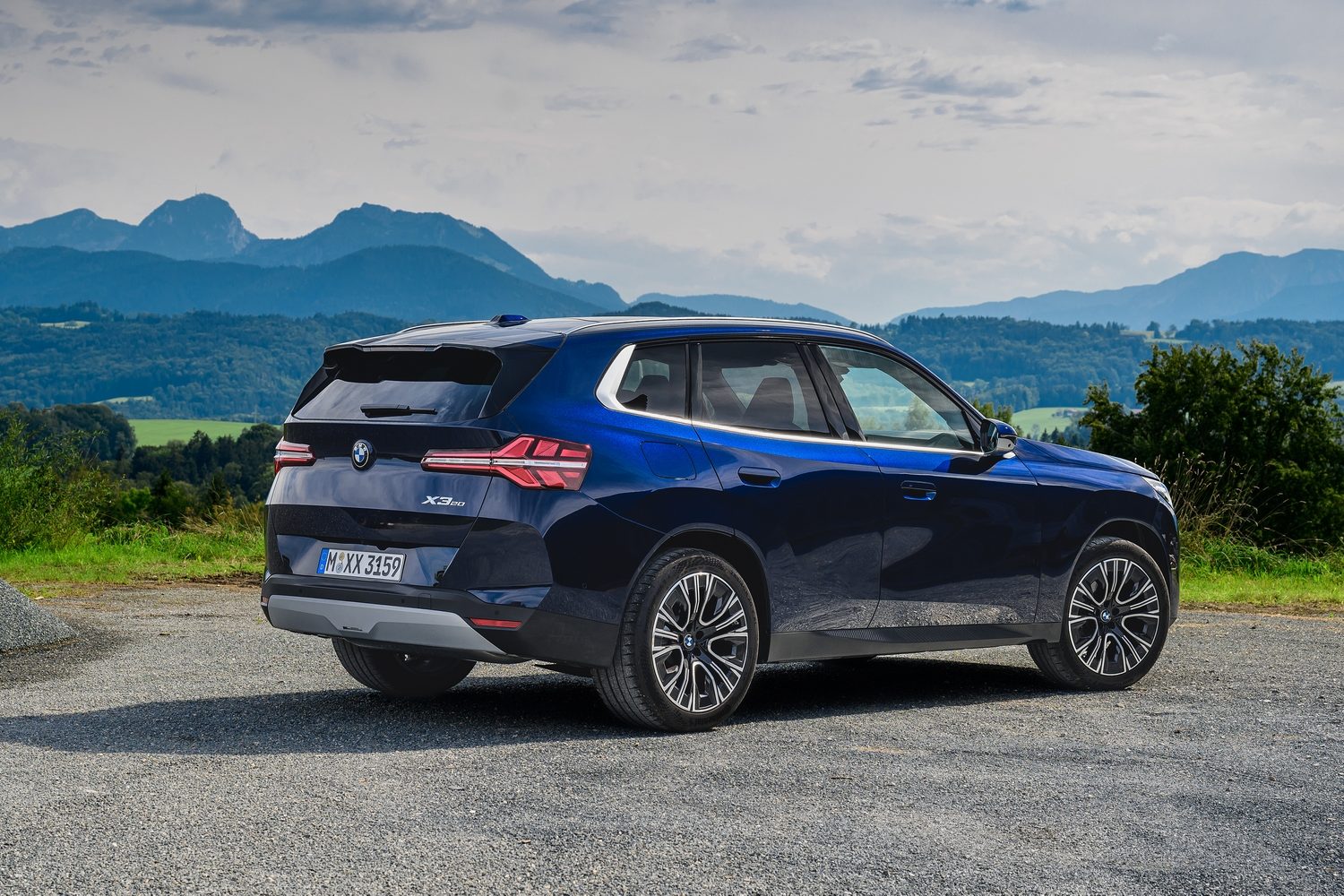
What does the new BMW X3 look like?
In keeping with the new BMW 5 Series, the X1 and the X2, the X3 has a more “monolithic” design than before, intended to make the car look as though it’s all one lump of metal. Whether it’s an improvement is a matter of taste, but it’s definitely a cleaner and more modern look, complete with muscular arches and lights that appear more tightly integrated into the body.
From certain angles, it looks a bit odd - particularly dead front on - but it’s unmistakably a BMW design and the brand has refrained from oversizing the grille too much. It is offered with an illuminated grille, though, and that will be divisive.
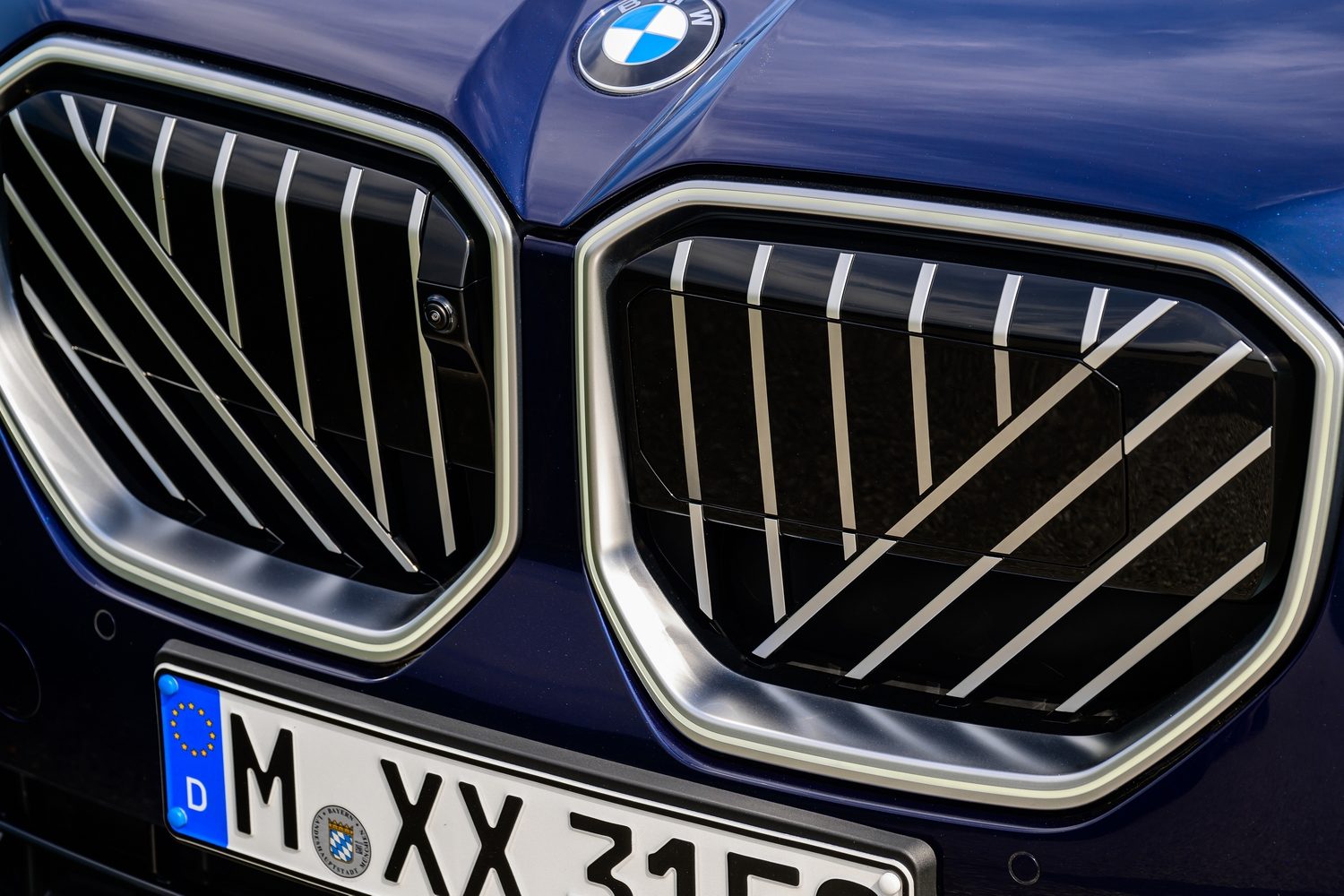
There are substantial changes to the rear, too, with a different silhouette to before and a more pronounced tailgate with lots more metal on show. There are new taillights, as well, and the whole car sits 25mm lower than its predecessor, in a bid to make it feel sportier while enhancing the aerodynamics.
As usual, customers get a choice of trim levels, with the M Sport models getting a bolder, sportier design with lots of black trim, while the range-topping M50 xDrive gets an even more aggressive look.
A look inside the BMW X3
As with so many other BMW products of late, the X3’s cabin has been given a minimalist makeover that centres heavily on technology. Suffice to say the ‘Curved Display’ features prominently, combining the touchscreen and digital instrument cluster in one housing, but there’s little else on the dashboard. Everything from climate control to drive mode selection has been delegated to the touchscreen, with just a few buttons on the centre console and steering wheel.
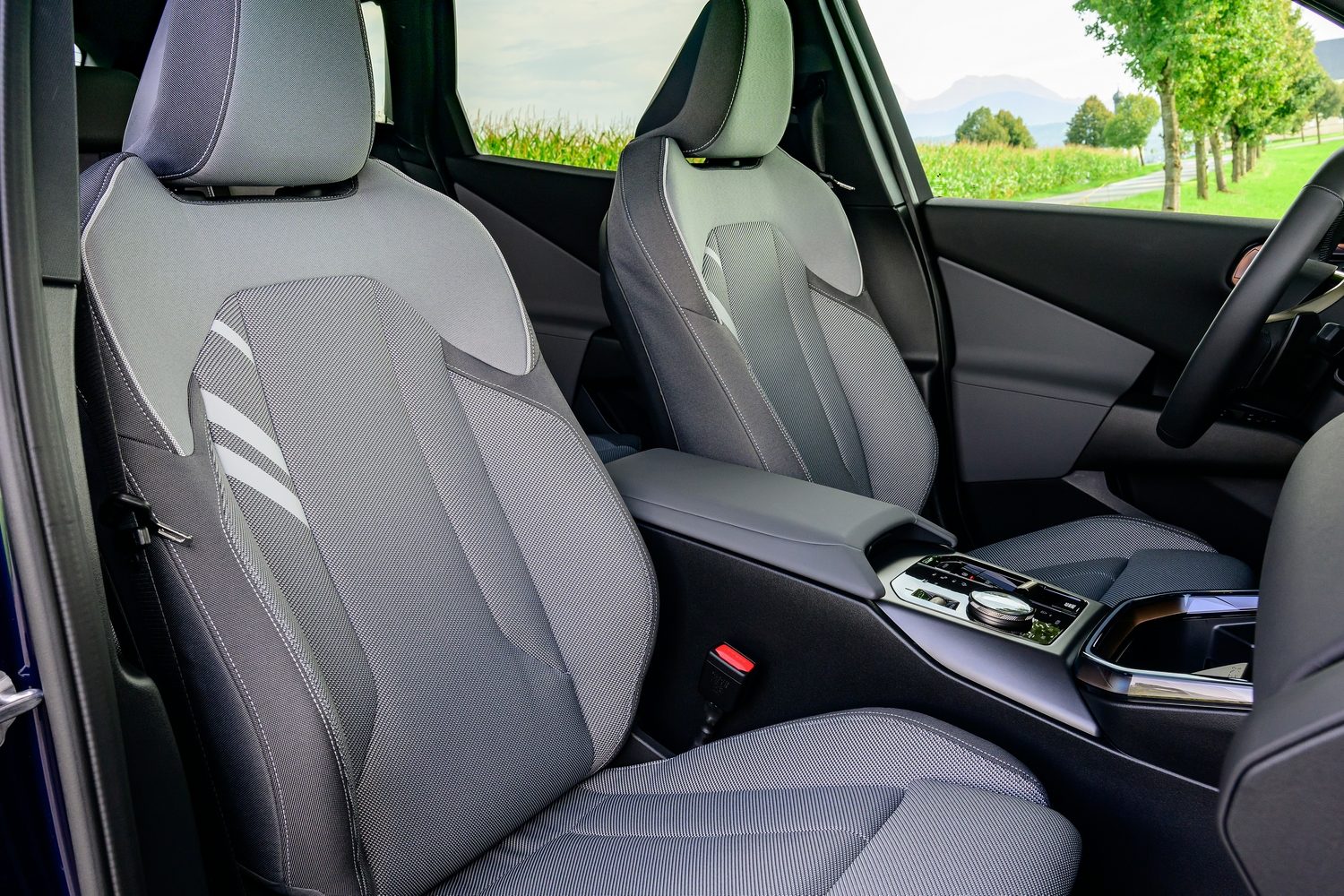
However, for all this minimalism, BMW has livened up the cabin with some ambient lighting technology lifted from the 7 Series and 5 Series models, with light panels that adapt depending on the drive mode and the situation. Go into Sport mode, for example, and the theme turns red and blue in honour of BMW’s classic racing colours.
And BMW is offering to wrap it all in more sustainable materials than before, with a fully ‘vegan’ interior available to those that want it. But while the cabin is more sustainable, it’s still spacious, with plenty of room for four adults to sit comfortably. The boot has grown to 570 litres in non-PHEV examples, too, and that’s respectable without being quite as impressive as the best in class.
But there’s a problem, and it’s quite a big one. In a refreshing moment of honesty, a BMW source confirmed cost pressures have hit the X3’s cabin hard, and some of the materials are less premium than the brand might have liked. In particular, the door catches and the locking switches on the door cards are made with really cheap-feeling plastic, and there’s more low-rent materials on show in the dashboard and the arm rests. It wouldn’t be so bad if this stuff were hidden away in places you never touch, but it shouldn’t be found on regular touchpoints.
As a result, the X3 feels like a less upmarket product than its predecessor, and that’s a retrograde step BMW really shouldn’t be making. For all its talk about sustainability and eco-friendliness, it’s still a premium marque, and customers will rightly expect more from the X3’s interior.
The BMW X3’s on-board technology
Thanks to the minimalist new dashboard design, there’s more responsibility on the shoulders of BMW’s latest-generation infotainment technology. The Operating System 9 software is in charge in a wide curved display that incorporates a digital instrument cluster and touchscreen, and it is left in charge of everything from climate control to driving modes and everything in between.
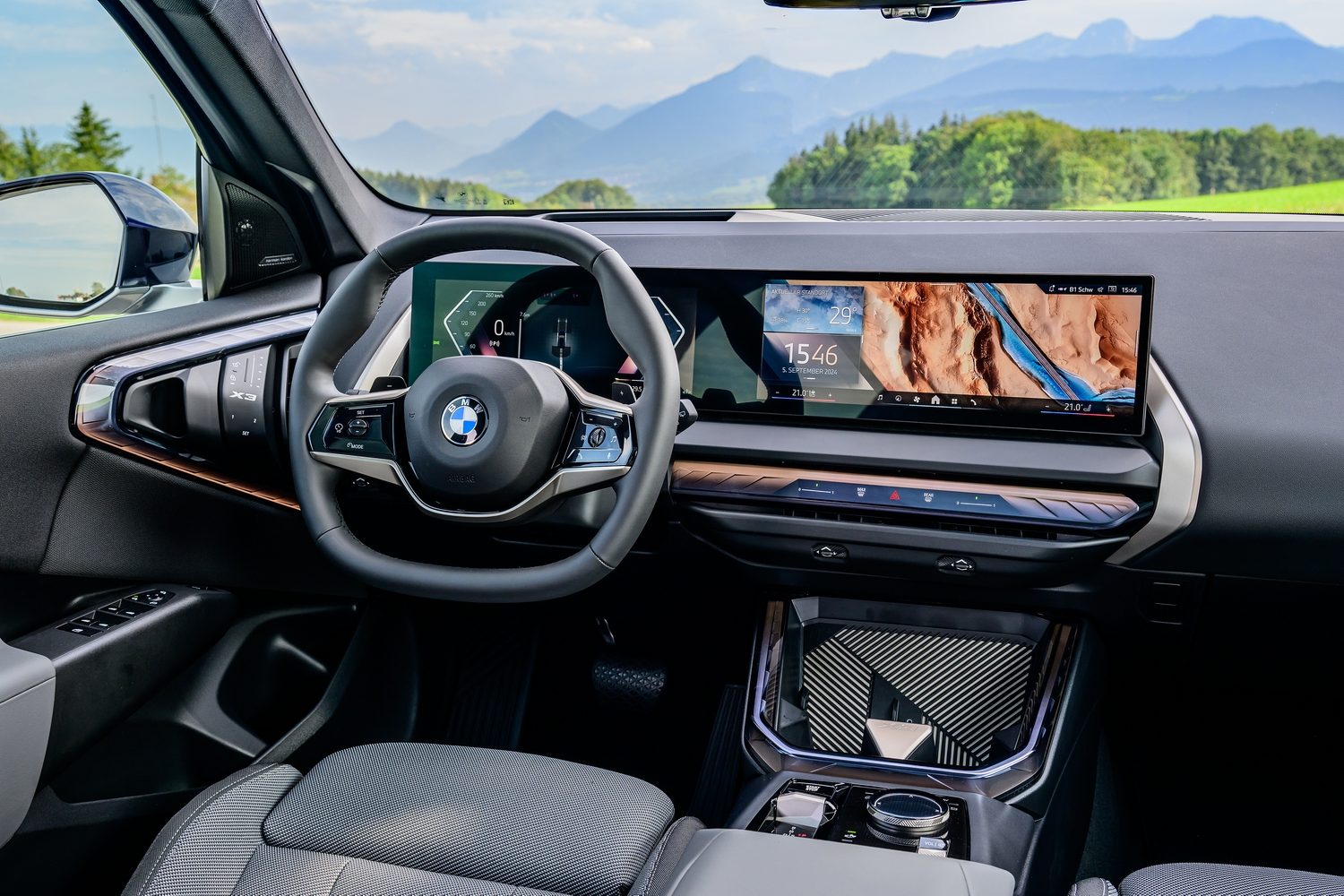
This, of course, has its problems. The screen is quite distracting, and you’re forced to look at it while using it, which means your eyes aren’t on the road. And because it has so many jobs, you have to look at it often. But while we’re normally set against using touchscreens for everything for exactly these reasons, the BMW system has a few redeeming features.
Perhaps the most important of these is the iDrive rotary controller in the centre console that allows you to use the system. Once you’ve learned your way around, this means you can navigate the screens almost by touch, reducing the distraction. The other useful addition is the inclusion of permanent heating and ventilation controls at the bottom of the display, so a temperature adjustment or heated seat is never more than a tap away.
Despite that, the system isn’t perfect. When you use it to change driving modes, for example, it resolutely remains on the driving mode screen until you navigate back to another view, which is a little irritating. Especially when use of a button would have minimised distraction, and the number of interactions required from the driver.
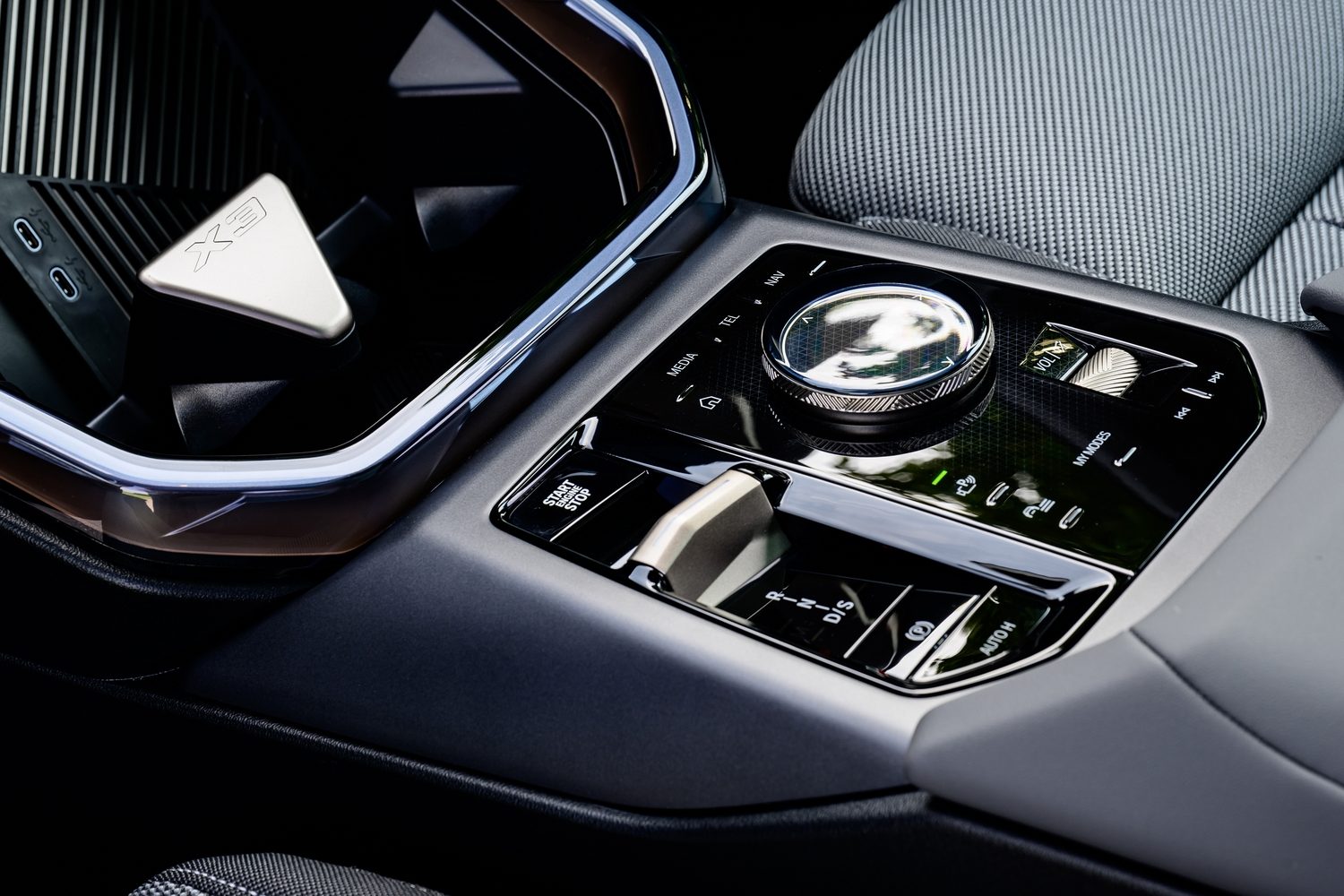
That said, the system is one of the fastest we’ve encountered, with sharp graphics and quick responses, as well as lots of configuration options for the instrument display. And it comes with clever tech that allows you to play digital arcade games including Uno Party and a Mario Kart-style racing game using the central screen. Obviously, you can’t use it while driving, but it’s designed for use while waiting for a passenger or during charging stops in plug-in examples. All of which means, in spite of its flaws, the BMW system is still one of the best in the business.
How efficient is the BMW X3?
The X3 engine range is set to shrink slightly with the arrival of the new model, and for the time being, just four powertrains are available. The ‘base’ option is the 197hp 2.0-litre diesel dubbed the 20d xDrive, and that’s joined by the 208hp 2.0-litre turbocharged four-cylinder petrol engine tested here, which wears the ’20 xDrive’ badge. Then there’s the 30e xDrive plug-in hybrid, as well as the range-topping M50 xDrive, and BMW will launch a 3.0-litre 30d xDrive diesel option next year, while a high-performance X3 M is also on the cards. A new iX3, however, has been ruled out, as the company is waiting for new electric vehicle architecture to arrive around Christmas 2025.
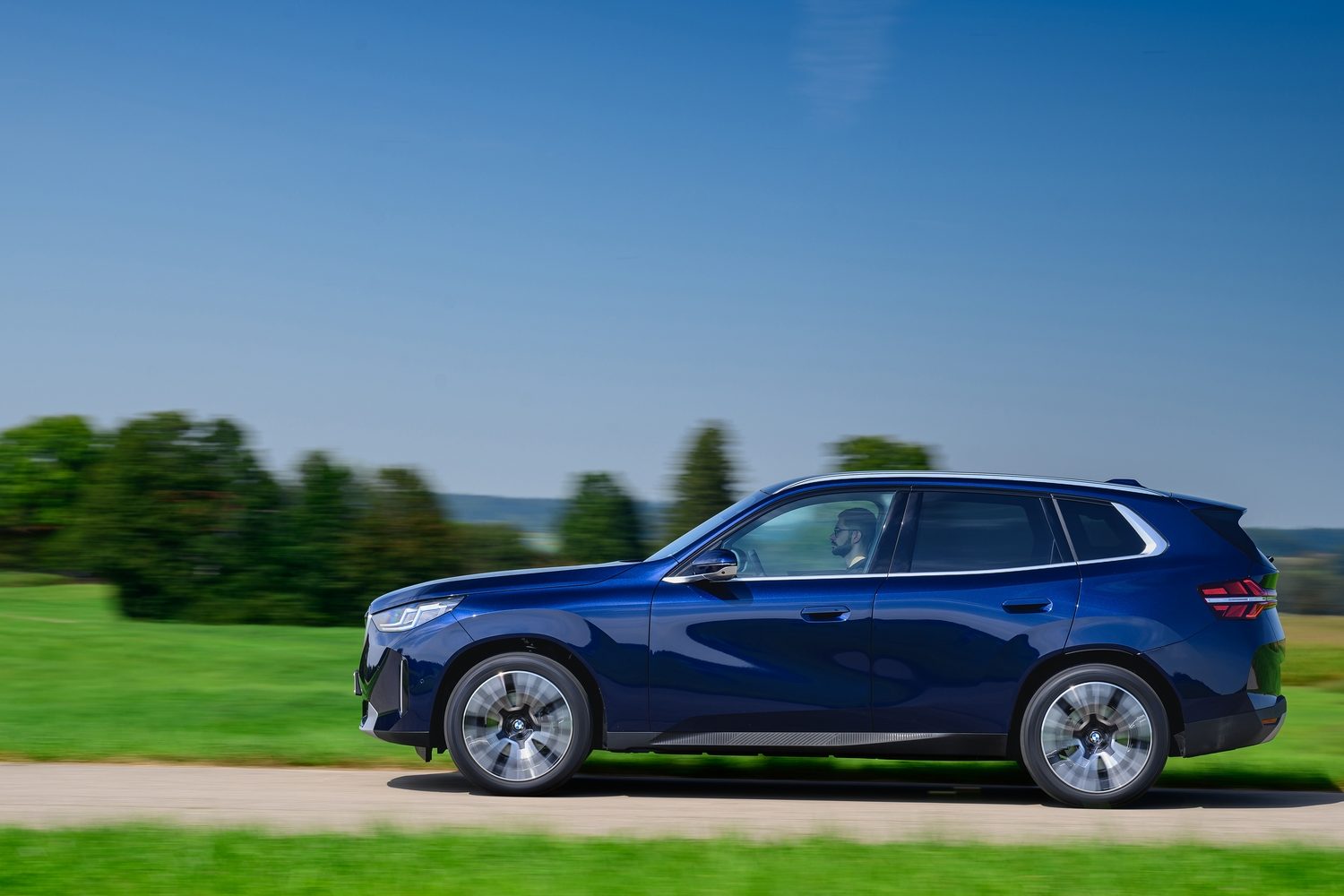
For most, then, the 20d xDrive will prove the most economical for long journeys, the 30e xDrive will be popular thanks to its urban efficiency and tax breaks (it’s the most affordable model), and the M50 xDrive will be the performance option - at least until the X3 M arrives. All of which leaves this 20 xDrive model a little lost at sea. At present, it’s billed as a relatively inexpensive middle ground between all the other X3 models, but that crown may soon be taken by the 30d xDrive and it’s six-cylinder diesel engine.
Whatever, the 20 xDrive is a strong option in its own right, thanks to a meaty power output, which heads to all four wheels via an eight-speed automatic gearbox, and sensible economy. You don’t really notice the mild-hybrid system in action, although it occasionally does some funny things to the brake pedal feel as it tries to recuperate energy, but it clearly has an impact. The official figures suggest it’ll burn about seven litres of unleaded every 100km, which isn’t bad going for a petrol-powered car of this size with 200hp under the bonnet. Admittedly, the emissions aren’t quite as impressive, but they’re respectable.
Driving the BMW X3
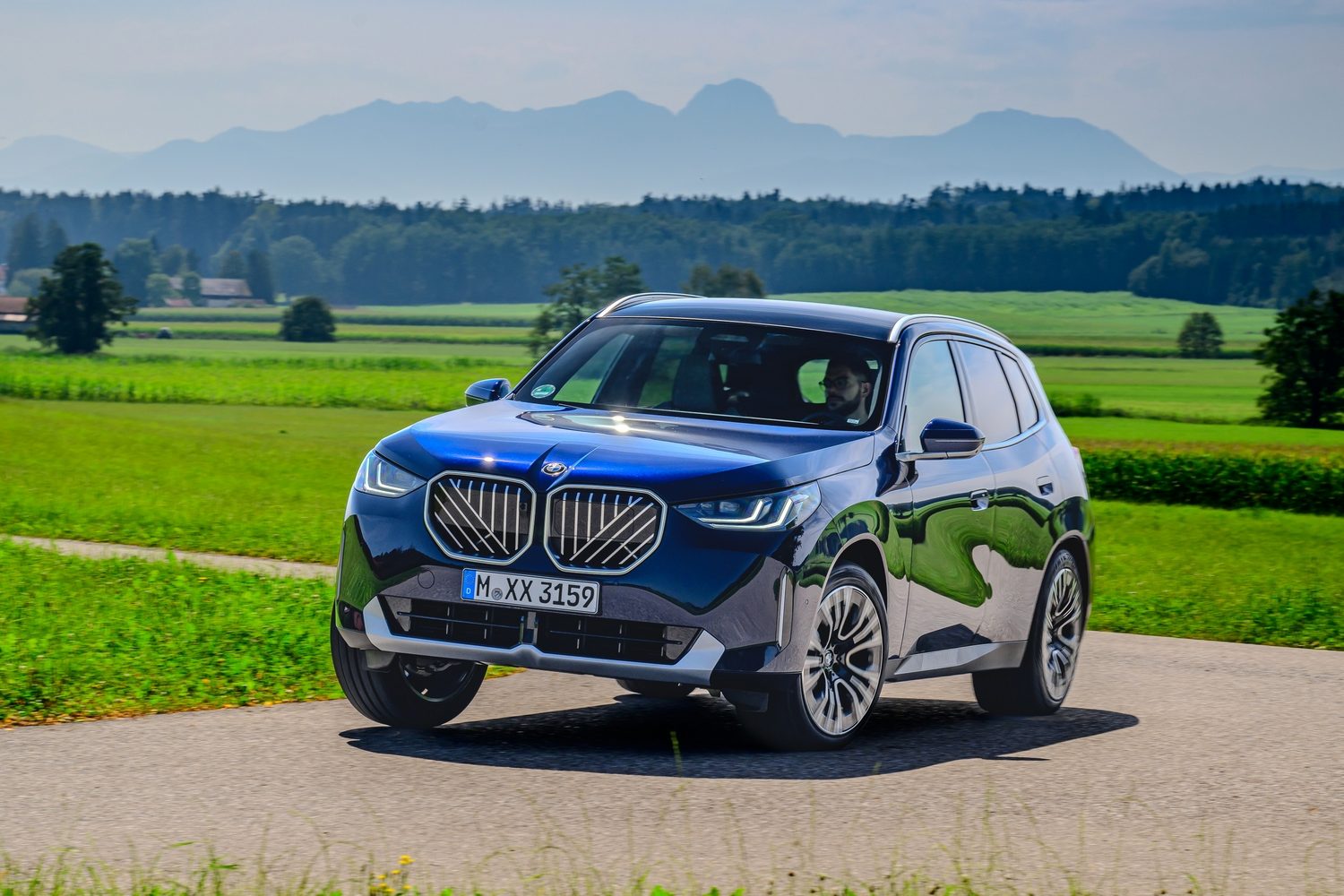
The way the X3 drives has traditionally been a big selling point for the car, and the new model picks up where its predecessors left off. The steering doesn’t have all that much feel, but it does have a linear and predictable response, and it offers more feedback than most cars in this class, aside from perhaps the Porsche Macan and Jaguar F-Pace. That steering is combined with a well-sorted chassis that controls body movement well, although there is still some lean in corners, as you’d expect from a car this tall. The M50 xDrive is more planted.
A 208hp output is more than adequate in a car of this size, too, as is ably demonstrated by the 20 xDrive’s sub-eight-second dash from 0-100km/h. And it’s relatively refined, as well, proving quiet at most speeds. Admittedly, the sound becomes a bit of a drone at higher engine revolutions, but that’s true of most four-cylinder engines, so we can’t criticise the BMW too harshly there.
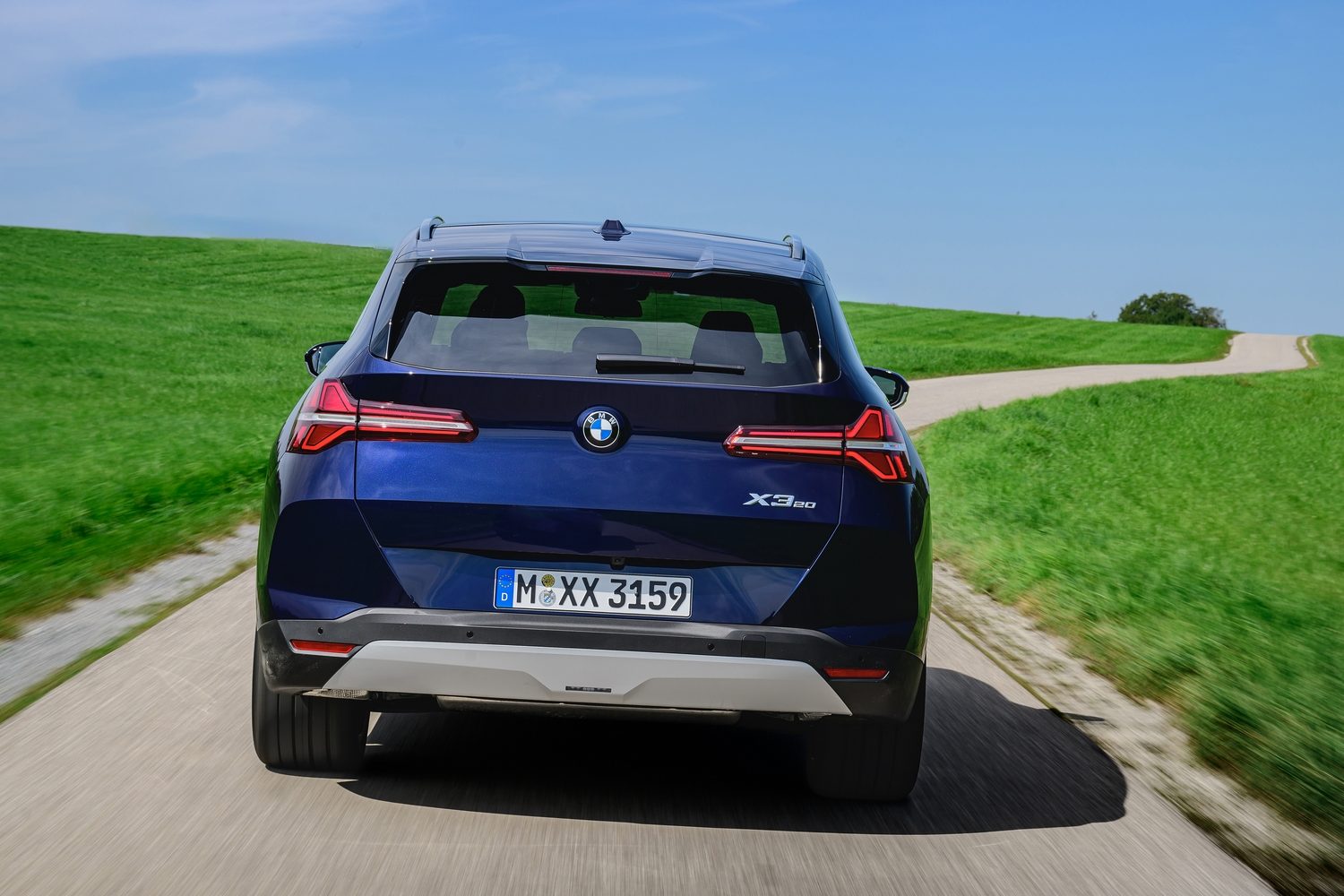
The M50 xDrive is less comfortable than the 20 xDrive, which manages to smooth out the bumps tidily without reducing the seat-of-the-pants feel required for cornering with gusto. It isn’t as comfortable as a Land Rover Discovery Sport or a Mercedes-Benz GLC, but it handles better, and it strikes a really appealing balance between the two disciplines. Any bumps you encounter are dealt with neatly and expeditiously, while the car never feels unsettled or surprised by imperfections in the road surface.
There is a degree of off-road capability, too, thanks to all-wheel drive as standard on all models and ample ground clearance, but that isn’t really the BMW’s focus. Nevertheless, with winter tyres on the rims, the X3 should be perfectly capable of dealing with any off-road situation owners will throw at it. And though the diesels (especially the forthcoming 30d xDrive) will be the engines of choice for such occasions, even the petrol-powered X3 offers adequate towing capacity.
How safe is the BMW X3?
The new X3 has not yet been assessed by the independent European safety body, Euro NCAP, but its predecessor scored a maximum five stars and we’ve every reason to expect more of the same from the new model. Not only does it have much the same architecture, but it’s festooned with yet more safety equipment.
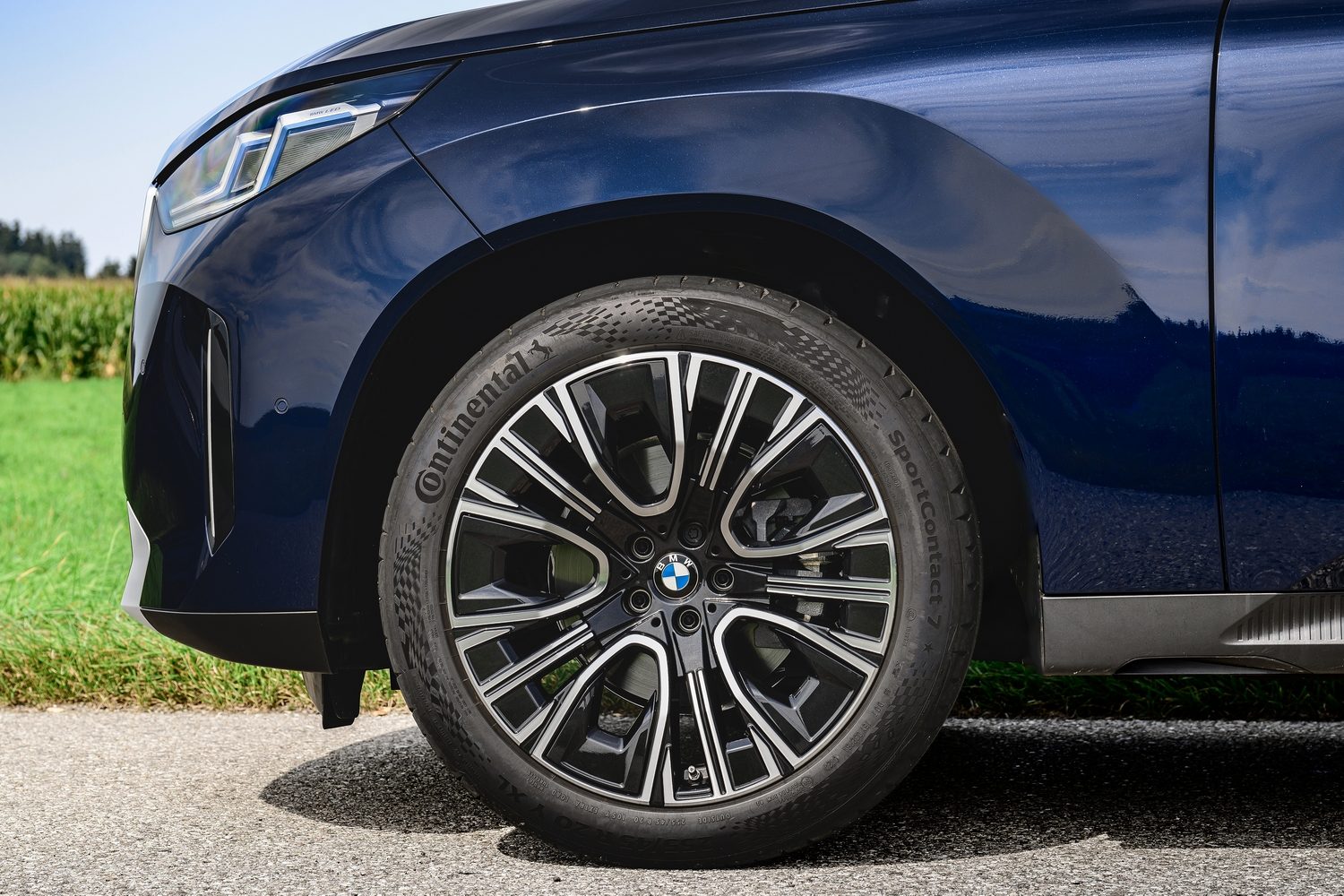
All the usual suspects are present and correct, including autonomous emergency braking to stop the car if the driver fails to react to a hazard, and the legally mandated speed limit warning technology. We’ve had a few run-ins with this before - primarily because the system doesn’t always know the speed limit - and the latest iteration has many of the same weaknesses, but at least it can be switched off easily.
Other, more useful items include a full suite of parking assistance features as standard, including the reversing camera, parking sensors and a system that will steer you into a parking space automatically if required.
How many child seats can you fit in a BMW X3?
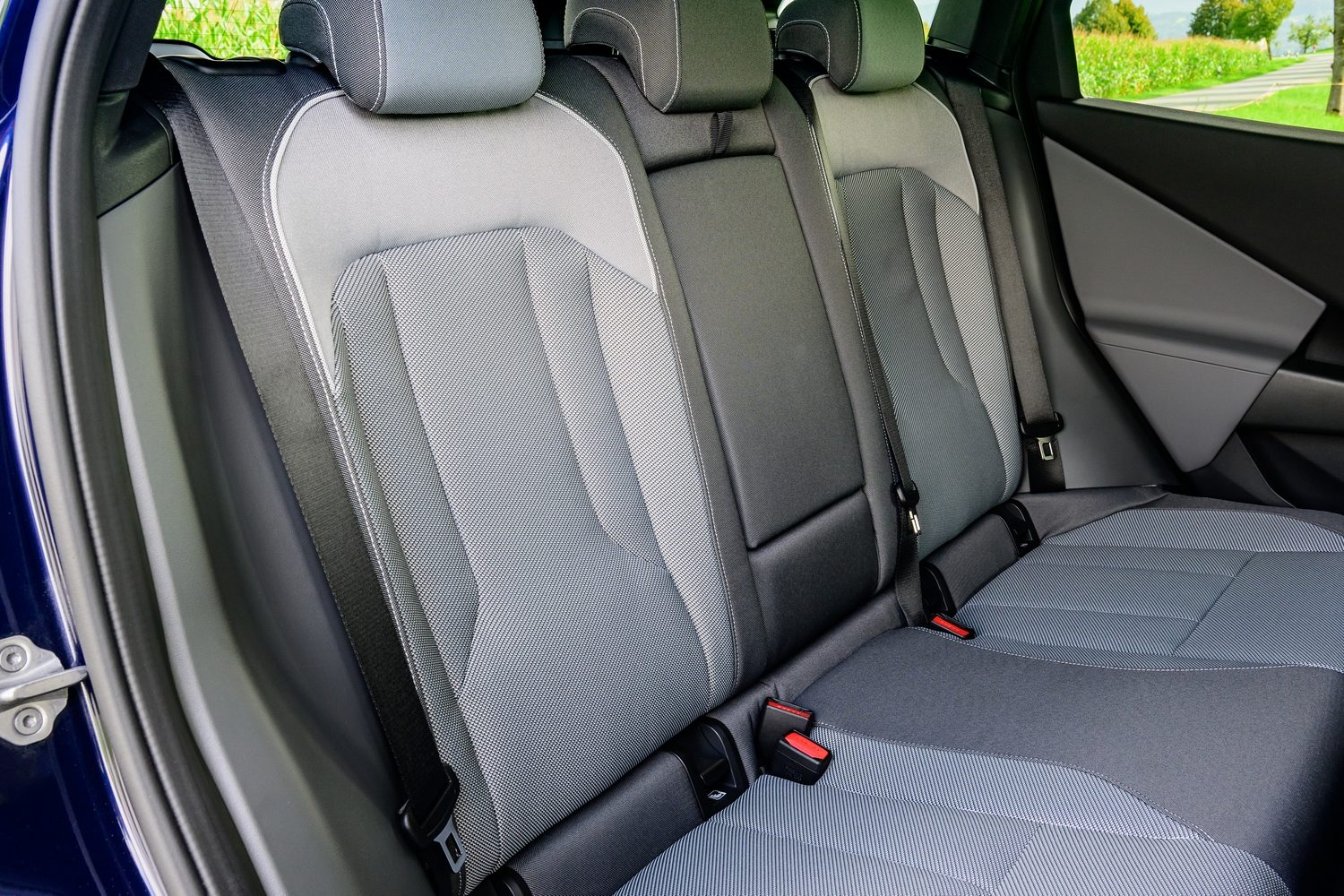
The new X3 gets two ISOFIX child seat mounting points on the outermost rear seats, which are easily far enough apart to fit even bulky seats side-by-side. Most owners will find that’s more than enough, but some of the X3’s rivals, including the DS 7, offer more flexibility with a third ISOFIX point on the front passenger seat.
How much does the BMW X3 cost in Ireland?
The new X3 range starts at €70,405, which buys the plug-in hybrid X3 30e xDrive in basic xLine form. That compares favourably with the Mercedes-Benz GLC, which costs more than €77,000, and you get plenty of equipment for your money. Standard specification includes the two screens, climate control and a reversing camera, not to mention a fully ‘vegan’ interior and heated seats.
Sports seats, wireless phone charging and satin aluminium exterior trim are all thrown in, too, along with electric seat adjustment, 18-inch alloys and an electronically actuated tailgate. Those that want the more upmarket M Sport models can have sportier styling, bigger wheels and black exterior trim if they’re willing to pay for it.
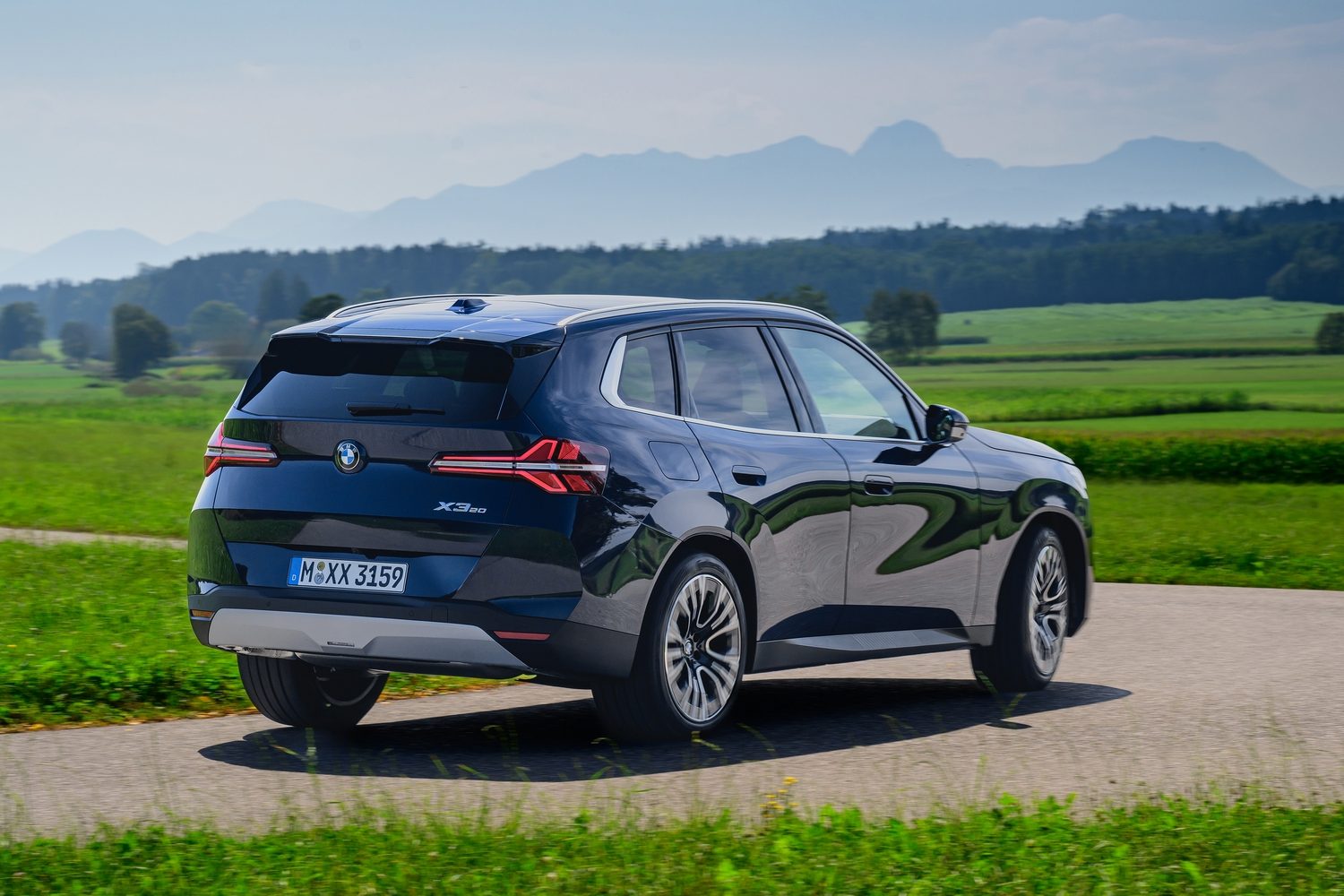
The reasons you’d buy a BMW X3
As an all-rounder, the X3 has plenty going for it, including an impressive chassis and great engines. The design won’t be for everyone and nor will the cabin quality, but it still has talent in abundance. We expect the diesel and hybrid versions to be more popular choices, but even this 2.0-litre petrol variant offers ample power and economy for most drivers. It’s still an accomplished premium SUV.
Ask us anything about the BMW X3
If you want to know more about the new BMW X3, or indeed any other car on sale in Ireland, head over to our Ask Us Anything page. There, you can access our expert hive mind completely free of charge, helping you to make your next car-buying decision.

